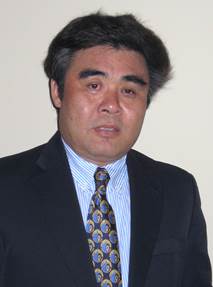学术报告:Probing the Equation of State of Super-Dense Matter in Neutron Stars
报告人:Prof. Bao-An Li(Department of Physics and Astronomy, Texas A&M University-Commerce )
报告时间:12月16日(周三)上午10:00 (在线:Zoom)
报告地点:https://zoom.com.cn/j/69046586032, 密码:194730
邀请人:蒋维洲
欢迎老师、同学们参加!
报告摘要:
Super-dense neutron-rich matter exists naturally in the cores of neutron stars.It can also be created during mergers of neutron stars in space and collisions between two heavy nuclei in terrestrial nuclear laboratories using high-energy radioactive beams. The nature and Equation of State (EOS) of such matter are still very poorly known but have broad impacts in both astrophysics and nuclear physics.In particular, the nuclear symmetry energy encoding the energy cost of making nuclear matter more neutron rich has been the most uncertain part of the EOS of dense neutron-rich nucleonic matter. It affects the masses, radii, tidal deformations, cooling rates and frequencies of various oscillation modes of isolated neutron stars as well as the strain amplitude and frequencies of gravitational waves from neutron star merger. To pin down the EOS of dense neutron-rich matter has been a long standing scientific goal of both nuclear physics and astrophysics.
In this talk, within the Bayesian statistical framework, we discuss how the recent measurements of the tidal deformation and radius of mostly canonical neutron stars of masses around 1.4 Msun from gravitational waves and high-precision X-rays have enabled us to significantly constrain the EOS of super-dense neutron-rich matter especially the density dependence of its symmetry energy term. The LIGO/VIRGO Collaborations discovered very recently that the GW190814’s secondary component has a mass of (2.50-2.67) Msun in the so-called mass “gap” between the most massive neutron stars and the lightest black holes detected so far while its major component is a black hole of mass (22.2-24.3) Msun. We will also discuss how the constrained nuclear EOS can explain the GW190814’s secondary component as a supermassive and superfast pulsar.
报告人简介:

Dr. Bao-An Li is a theoretical nuclear physicist. He is a Texas A&M University System Regents’ Professor and a Fellow of the American Physical Society. Prof. Li received his Ph.D from Michigan State University in 1991. He held research, faculty and administrative positions at Oak Ridge National Laboratory in the U.S., Niels Bohr Institute in Denmark, Hahn-Meitner Institute in Germany, Texas A&M University in College Station and Arkansas State University before joining the Texas A&M University-Commerce in 2006 as the Head of its Department of Physics and Astronomy for 5 years. His work has received over 18,375 citations with a H-index of 68 on Google Scholars as of Dec. 2020. His research interests are in understanding the dynamics of nuclear reactions from low to relativistic energies, the Equation of State of dense neutron-rich nuclear matter as well as its imprints in observables of neutron stars and gravitational waves from both isolated and mergers of neutron stars.
